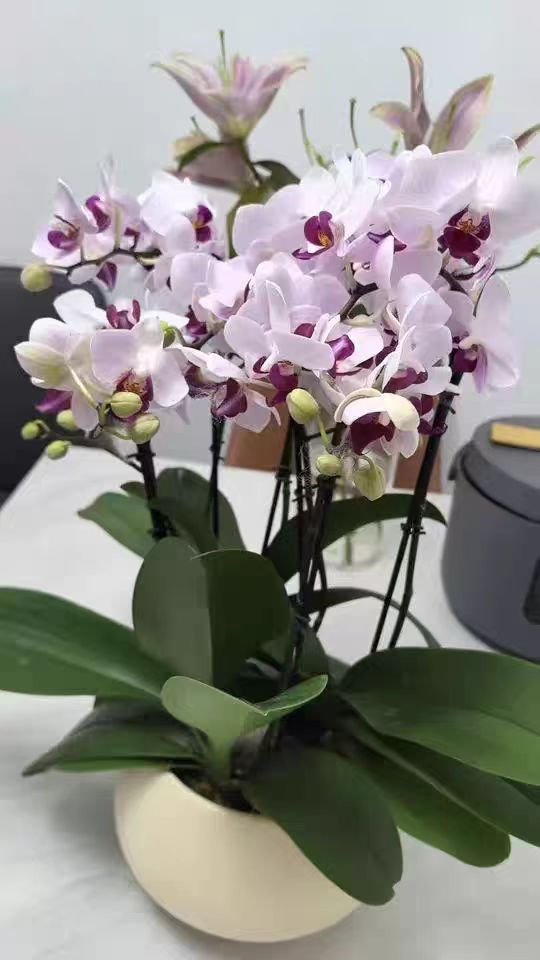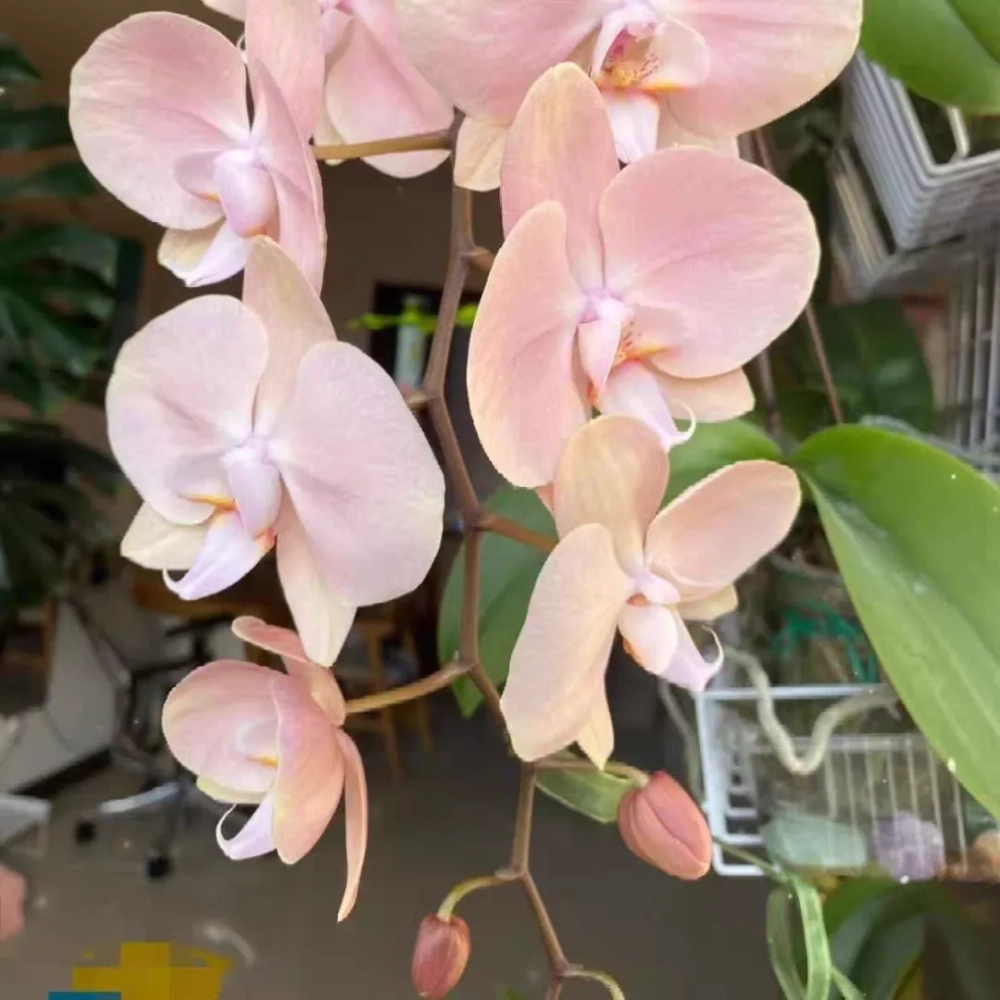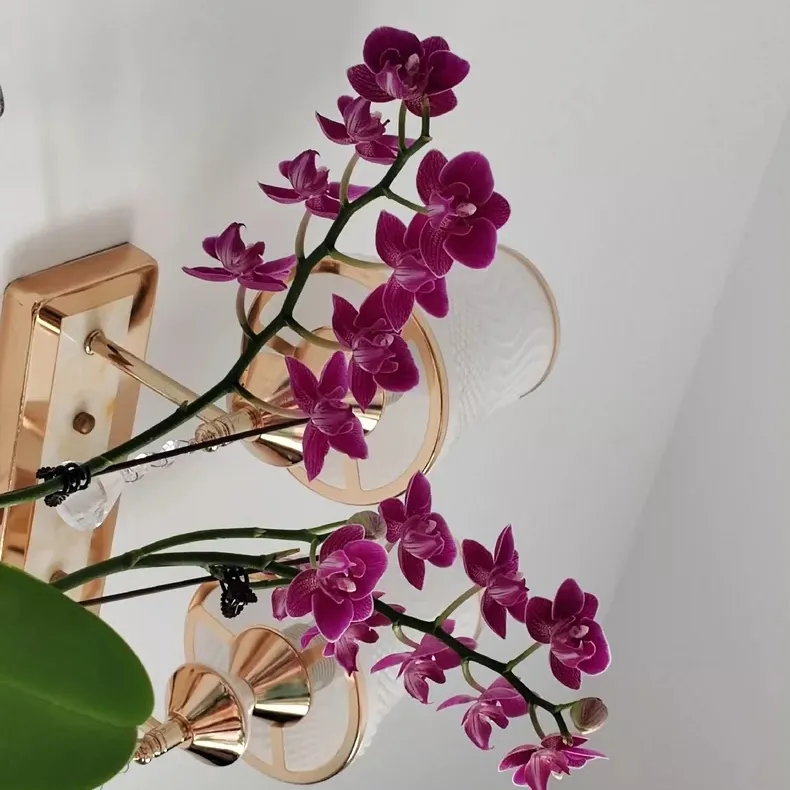After admiring the dreamy and illusory flowers of the Phalaenopsis, when faced with the plant with fallen flowers, many people will have a question in their minds: Should the stem of the Phalaenopsis be cut after the flowers fall? And how should it be cultivated?
After the flowers of the Phalaenopsis fall, cutting the stem is an important maintenance step. The main purpose of cutting the stem is to reduce the consumption of nutrients and promote the recovery and subsequent growth of the plant. Regarding the specific method of cutting the stem, flower enthusiasts can choose light pruning (slight pruning) or heavy pruning according to their own needs.
Light pruning: If you want the Phalaenopsis to bloom again in the same year, you can choose light pruning. Cut the flower stem at the 4th to 5th node from the base of the flower stem, leaving the bud points. This pruning method can prompt the Phalaenopsis to bloom again within 2 to 3 months after pruning. However, it should be noted that light pruning will consume a large amount of nutrients of the plant, which may have a certain impact on the quality of the flowers in the following year.
Heavy pruning: If you want the Phalaenopsis to bloom more vigorously in the coming year, it is recommended to adopt heavy pruning. Counting from the bottom of the flower stem, prune about one centimeter above the first node. This pruning method can completely reduce the loss of nutrients, allow the Phalaenopsis to rest and recuperate, concentrate more nutrients on the growth of the roots and the germination of new buds, and accumulate sufficient energy for blooming in the next year.
No matter which pruning method is chosen, a clean pair of scissors should be used and disinfected with alcohol in advance to avoid the wound being infected by germs. After pruning, place the Phalaenopsis in a well-ventilated place to let the wound dry and heal as soon as possible.
In addition to cutting the stem, the cultivation methods of the Phalaenopsis after the flowers fall also include checking the roots, repotting and pruning the roots, managing the light and temperature, watering and fertilizing, as well as controlling the humidity and ventilation.
Checking the roots, repotting and pruning the roots: After the flowers wither, take the Phalaenopsis out of the pot and check the health of the roots. Peel off the old medium, rinse the roots with clean water, cut off the shriveled, blackened and rotten roots, and only keep the plump and healthy aerial roots. After disinfection, replace the old sphagnum moss with new one and change to a new pot to ensure that the substrate is in close contact with the roots.
Managing the light and temperature: The Phalaenopsis likes bright scattered light and should be placed in a location with sufficient scattered light indoors. When the sunlight is strong in summer, shading measures should be taken; when the sunlight is mild in winter, the lighting time can be appropriately increased. Keep the temperature between 20℃ and 28℃, and it should not be lower than 10℃ in winter to prevent the plant from being damaged by frost.
Watering and fertilizing: Watering the Phalaenopsis should not be done blindly. You can judge whether it needs watering by observing the color of the roots and the water vapor in the pot. When watering, slowly pour water around the edge of the pot, and be careful not to pour water on the center of the leaves. Suspend fertilization within one month after the flowers wither to give the Phalaenopsis time to recover. After it resumes growth, apply a thin liquid fertilizer with a balanced ratio of nitrogen, phosphorus and potassium every 2 to 3 weeks. In autumn, to promote flower bud differentiation, phosphorus and potassium fertilizers can be increased.
Controlling the humidity and ventilation: Air humidity is also very important for the growth of the Phalaenopsis and should be maintained at 60% to 70%. In dry areas in the north, humidity can be increased by spraying, but avoid the center of the leaves. At the same time, place the Phalaenopsis in a well-ventilated place for maintenance to reduce the occurrence of diseases and pests.
The maintenance of the Phalaenopsis after the flowers fall is crucial. By reasonably judging whether to cut the stem and mastering scientific cultivation methods, flower enthusiasts can better care for the Phalaenopsis and make it bloom beautifully year after year.
Should the stem of a Phalaenopsis be cut after the flowers fall?

Share with
Tagged in :




Leave a Reply